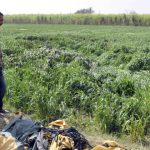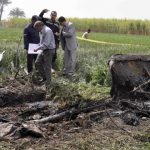Egypt hot air balloon tragedy: coroner’s report calls for insurance market regulation


Insurance Hong Kong
Introduction
Facts
Travel insurance
Recommendations
Comment
Introduction
“Balloon crash victim compensation raises concerns for insurance market regulation” reported on a tragic hot air balloon accident that occurred in Egypt in February 2013. The update touched on:
the accident;
the victims’ travel insurance arrangements; and
the wider ramifications for reform in the existing insurance regulatory regime in Hong Kong.
On June 7 2016 the Hong Kong Coroner’s Tribunal reported the findings of its inquisition in respect of the accident.(1) In addition to the core issues such as cause of death, the coroner addressed the issues of travel insurance in the context of the accident.
Facts
On February 26 2013 19 tourists lost their lives in the deadliest hot air ballooning disaster in history. Nine of the victims were Hong Kong citizens travelling abroad. The coroner summarised her findings as follows:
“Having heard all the evidence I accept and find that:
Injury causing death
The medical causes of death for all of the deceased were multiple injuries and burns.
Time, place and circumstances at or in which injury was sustained
All nine deceased died in the morning of 26 Feb 2013 during a hot-air balloon ride over Luxor City when the balloon caught fire during the flight after the landing procedure had started. The fire was due to hose full leak at the upper portion of the forward right hose connected to the burner number 193. Such fire also caused serious and direct injury to the balloon pilot who was unable to do anything to control the fire.
Conclusion as to the deaths
I find the conclusion as to the deaths of all deceased to be death by accident.” (emphasis added)
Travel insurance
It was reported that three of the nine Hong Kong victims had purchased travel insurance policies from Generali International Ltd through the travel agent arranging the tour, Kuoni Travel (China) Ltd. The remaining six victims purchased their insurance from China Merchants Insurance Company Ltd. The Generali travel insurance policy covered compensation for aerial activities, including hot air ballooning, while the China Merchants policy did not.
The coroner’s report dealt with the issue of travel insurance. It referred to the following description of the hot air balloon ride that was provided to the victims before they embarked on the ride:
“Go on a hot air balloon ride in Luxor to view the beauty of Nile and Luxor. This activity includes breakfast and insurance. An aviation certificate will be issued: Approx. 45 minutes (the entire trip takes approx. 2.5 hrs: USD 190 for all age groups.”
The coroner found that the description of the hot air balloon ride pertaining to insurance was ambiguous. When asked for an explanation, a Kuoni representative could provide only a vague answer as to the meaning of the description and admitted that Kuoni had simply copied and translated the information given in the hot air balloon operator’s leaflet. In the coroner’s view, such an ambiguous clause was more likely to mislead customers into believing that the hot air balloon activity was covered by their own travel insurance or by the operator’s insurance, when in fact it was not. Had participants been warned more clearly and specifically that their insurance would not cover the hot air balloon activity, they might have reconsidered their decision to participate in the activity.
Recommendations
The coroner found that Kuoni had not acquired sufficient information on the hot air balloon activity for its own risk assessment before offering the activity to its customers, and that because the participants had joined a travel group, there was a likelihood that Kuoni would have a higher threshold of responsibility to conduct sufficient risk assessments before offering certain activities and to disseminate sufficient information about those activities to its participants.
Pursuant to Section 44(2) of the Coroners Ordinance (Cap 504), the coroner at an inquest may make recommendations designed to “bring to the attention of a person who may have power to take appropriate action any deficiencies in a system or method of work which are disclosed by the evidence at the inquest and which are of public concern”.
Towards the end of the report, the coroner provided recommendations to the Travel Industry Council (TIC) and Kuoni relating to travel insurance and compensation:
“Recommendations to Travel Industry Council (TIC)
…
3) TIC to set out clear and specific guidelines for travel companies that customers should be reminded that their travel insurance may not cover activities involving certain degree of risk…
6) TIC to set out safety guidance and advertise to customers as to the importance of obtaining details of travel policy insurance and information on activities involving risk before enrolment.
Recommendations to Kuoni
…
3) Kuoni to provide sufficient information to customers about activities involving certain risk and remind them in more specific and clear terms that activities involving risk may not be covered by their travel insurance.”
Comment
Although the coroner at the inquest did not specifically make recommendations to the Office of the Commissioner of Insurance (OCI), it is likely that Hong Kong’s insurance regulator will consider appropriate action concerning insurers that offer travel insurance products. Insurers selling travel insurance policies will need to keep abreast of any new regulations which the OCI may implement, to ensure that those who purchase travel insurance understand the extent of their coverage, particularly concerning potentially risky activities.
In addition, any recommendations of the coroner that the OCI might be considering must be viewed against the backdrop of the OCI’s imminent handover of responsibility to the new Independent Insurance Authority (IIA). The primary function of the IIA is to promote proper standards of conduct and to protect insurance policyholders. The IIA will be empowered to:
issue licences;
regulate the selling of insurance in Hong Kong; and
prosecute and discipline vendors of insurance for misselling and regulatory non-compliance.
Compared to the current self-regulated regime, the IIA will be given enhanced powers to oversee the regulation of insurers and insurance intermediaries, including the power to impose penalties for misconduct on members of the industry and to impose disciplinary penalties ranging from suspension or revocation of licences to imposition of fines.
In light of the coroner’s recommendations, the insurance industry will be closely watching how Hong Kong’s new insurance watchdog will react and what sort of regulatory measures will be put in place so that the travel insurance issues arising from the Egyptian hot air balloon tragedy do not happen again.
For further information on this topic please contact Kevin Bowers at Howse Williams Bowers by telephone (+852 2803 3648) or email ([email protected]). The Howse Williams Bowers website can be accessed at www.hwbhk.com.
Endnotes
(1) Re Ho Oi Hing [2016] HKEC 1268.
The materials contained on this website are for general information purposes only and are subject to the disclaimer.
ILO is a premium online legal update service for major companies and law firms worldwide. In-house corporate counsel and other users of legal services, as well as law firm partners, qualify for a free subscription.
For more on this story go to: http://www.internationallawoffice.com/Newsletters/Insurance/Hong-Kong/Howse-Williams-Bowers/Egypt-hot-air-balloon-tragedy-coroners-report-calls-for-insurance-market-regulation?utm_source=ILO+Newsletter&utm_medium=email&utm_content=Newsletter+2016-08-23&utm_campaign=Insurance+Newsletter
Related story:
Deadliest balloon crash in decades kills 19 in Egypt
By Mariano Castillo. Saad Abedine and Holly Yan, From CNN
updated 5:48 PM EST, Tue February 26, 2013
(CNN) — The view from above southern Egypt is stunning, a contrast of beige desert valley giving way to green farmland, including fields of sugar cane. Tourists soak in the sight by hiring hot air balloons that have large baskets to carry passengers hundreds of feet above the countryside.
Tuesday morning, as one of the balloons prepared to land, an explosion pierced the air, followed by a spreading billow of smoke.
“My first thought was that it was sugar cane that was burning,” said Christopher Michel, a photographer who was a passenger in another balloon at the time.
Smoke from the burning sugar cane painted the ancient city of Luxor below with an eerie haziness.
© NAVTEQ 2012 Terms of Use
But the concern shown by the balloon pilot and the blaring sirens from emergency vehicles told Michel that something was wrong. He could not imagine the extent: One of the balloons had exploded, and its 21 passengers and operators plummeted about 1,000 feet (300 meters) to the ground.
By Tuesday afternoon, the number of dead had climbed to 19, making it the world’s deadliest hot air balloon accident in at least 20 years.
“This juxtaposition of this great beauty and this wonderful country and this horrible tragedy is just really shocking,” Michel told CNN. “We all feel terrible.”
It was an early, dark morning, Michel said, and uneventful for 45 minutes until they started to descend. He was overlooking mud-brick buildings and fields, with the Valley of the Kings in the distance, when the explosion shattered the quiet of the morning.
It was a gas explosion, state-run EgyNews reported.
Photos: Fatal hot air balloon crash
Photos: Fatal hot air balloon crash
19 killed, 2 injured in balloon crash
Tourists killed in hot air balloon blast
Passengers in the balloon included 19 foreign tourists: nine from Hong Kong, four from Japan, three from Britain, two from France and one from Hungary, officials said.
An Egyptian pilot and another Egyptian also were on board, Luxor province spokesman Badawi al-Masri said.
Two people — a Briton and the pilot — are hospitalized.
Balloon rides offering panoramic aerial views of the Nile River and the ancient temples of Karnak and Hatshepsut are a popular tourist attraction in Luxor, about a nine-hour drive southeast of Cairo.
“You can see Valley of the Kings in the background bordered by farmland,” Pauline Liang of Vancouver, Canada, told CNN’s iReport last year. “Below were banana farms, and behind us was the city of Luxor. There was a great contrast between desert landscape, lush farmland and urban development.”
Tuesday’s crash prompted Gov. Izzat Saad of Luxor province to ban all hot air balloon flights until further notice.
Conflicting reports emerged about the company that operated the doomed balloon, Sky Cruise.
The head of the country’s civil aviation authority said the company was licensed and working legally, EgyNews reported.
The agency has begun an investigation of the incident, Mohammed Ibrahim Sharif said.
According to Sharif, a fire broke out in the balloon while the workers were trying to land it, just feet from the ground. The balloon then shot upwards again, he said.
The balloon’s basket was divided into four parts, he said, each holding five passengers.
Meanwhile, Luxor’s chamber of tourism said the company had previous violations, EgyNews reported.
Several balloon companies had terminated contracts with the local meteorological service after the Egyptian revolution, Tharwat Agami, chairman of the chamber of tourism, said.
Sky Cruise and other companies were known to violate safety and security instructions by flying out of East Luxor, instead of the recommended West Luxor, he said.
Comparing it to a previous hot air balloon experience in another country, Michel noted that there was no safety briefing before the Luxor balloons lifted off the ground, but added that he felt safe during the trip.
From what he could tell, the doomed balloon was not overloaded, he said on his Twitter account.
Luxor is among Egypt’s top tourist draws. Visitors go to see ancient temples and tombs, and travel sites often recommend the hot air balloon trips.
The last hot air balloon accident in Luxor occurred in 2009, when 16 foreign tourists were injured after a balloon struck a cell phone transmission tower.
Until Tuesday’s incident, the deadliest accident in recent memory took place in 1989, when 13 people were killed as two hot air balloons collided in Australia.
Egyptian government spokesman Alaa Hadidi announced that the Cabinet will form a committee from the Ministry of Civil Aviation to investigate Tuesday’s accident, EgyNews said.
IMAGES: CNN
For more on this story go to: http://edition.cnn.com/2013/02/26/world/africa/egypt-balloon-deaths/








